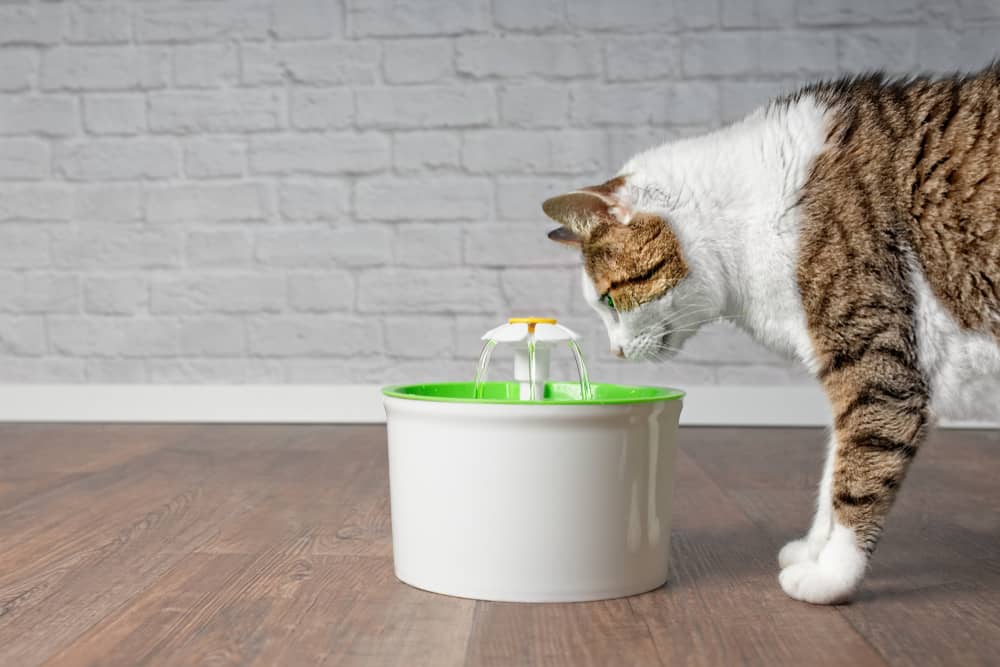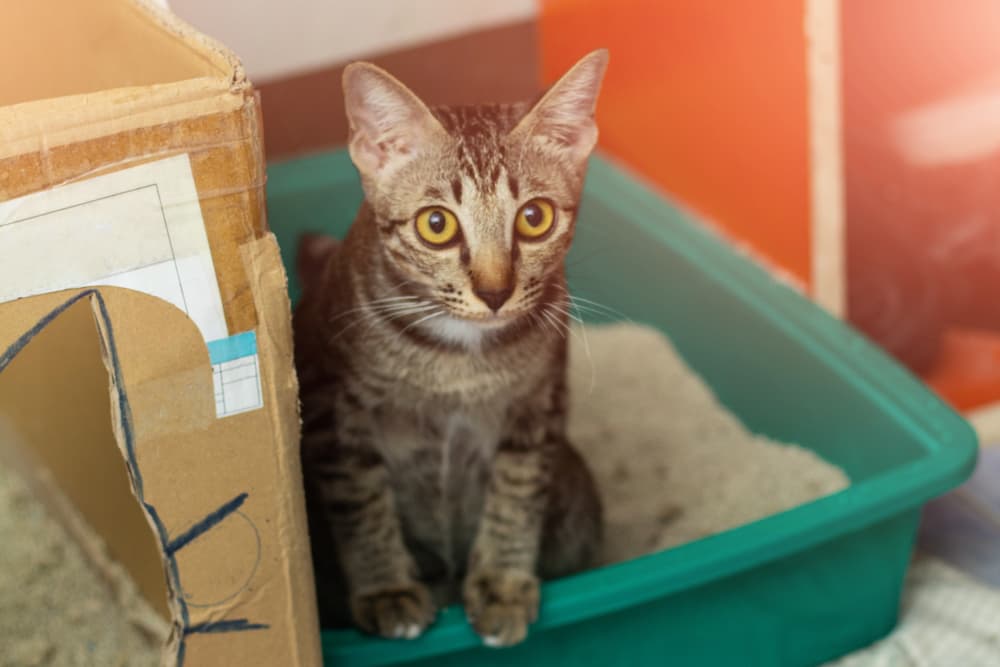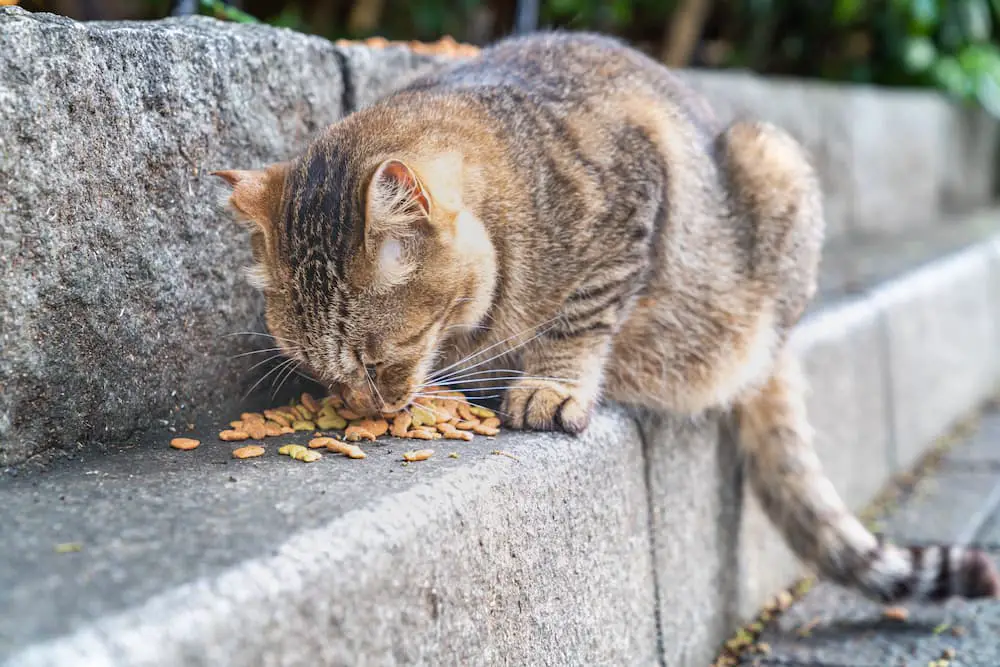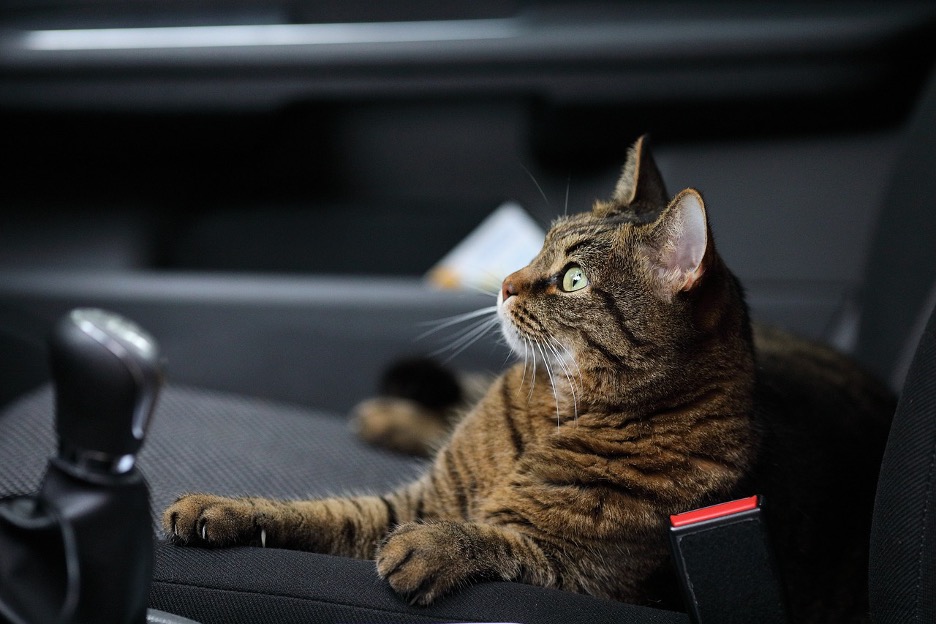As a cat owner, you’re likely all too aware of how finicky our feline friends can be — especially when thrown into stressful, unfamiliar situations. However, there’s no reason why road-tripping with your feline companion can’t be stress-free and enjoyable. It’s all about making the right preparations and ensuring your cat feels safe and comfortable along the way.
It’s also important to remember your own needs when traveling with a pet. Though your instinct might be to cater to your cat’s needs, you should be mindful to address your own needs as well to ensure you also have a safe and enjoyable time.
From choosing a carrier to fitting a litter box in the car — we’ve got all the tips you’ll need to help you and your cat have a safe and fun adventure on the road together.
1. Choose the Purr-fect Carrier
When taking your cat on a road trip, it’s important to choose the right carrier as they’ll be spending a lot of time in it. It should be well-ventilated and provide plenty of room for your cat to stand up, turn around, and lie down comfortably. You’ll also want to choose a carrier that is sturdy and that can be strapped in so it doesn’t go moving around if you slam on the brakes or get into an accident.
2. Don’t Forget a Harness and Leash
Two other important items that should be on your road trip checklist for your cat are a harness and a leash. Even if you don’t normally take your cat outside for walks, it’s a good idea to get them a leash and a harness for your trip. These items will come in handy in case you need to let your cat out for emergencies or simply to let them get out and stretch their legs and see the sights with you.
Just make sure you get them used to wearing the harness and walking on a leash before you go on the trip. You can start by letting them wear the harness and walk around with the leash inside, then start taking them outside in small increments until they feel more comfortable with it.
3. Keep Yourself and Kitty Fed and Hydrated
When driving for long hours in the car, it’s important to keep yourself hydrated and fed so you have the energy to stay alert. If you push yourself for too long without eating or drinking anything, you can start to get tired and even cranky, which is a bad combination when you’re driving.
While the car is in motion, your cat might also be too stressed to eat or drink anything, so you’ll need to take breaks for them as well. It’s also a good idea to bring some of their favorite treats along to keep them happy and reward them for traveling with you.
4. Don’t Let Your Feline Passenger Distract You
Distracted driving is a serious issue that causes thousands of deaths and injuries every year. Some of the most common causes of distracted driving include texting while driving or eating while driving, but handling pets or being distracted by pets in the car can also cause accidents.
So as much as you might want to let your cat roam free in the car and even let them ride in your lap, this is a bad idea. The last thing you want is to put your life and your cat’s life at risk, so to avoid the distraction of having them in the car with you, it’s best to keep them in the carrier while the car is in motion.
5. Yes, You Can Put a Litter Box in Your Car
Even if you plan to take your cat outside to do their business on a leash, it’s still a good idea to travel with a litter box. Your cat might end up being too stressed to potty outside and a litter box will likely feel more familiar to them, and you’ll also want it for your overnight stays along the way.
There are lots of travel litter boxes out there to choose from and you can place it on the floor behind the front seats so it won’t move around too much. Using the same litter you use at home will also help, as the scent will be familiar to your cat.
Make sure you bring bags to scoop the used litter into and even a spare travel scoop. You’ll likely want to keep the litter box cleaned out as often as possible so it doesn’t stink up the car.
6. Take Frequent Breaks
Not only should you take frequent breaks so you and your cat can stretch your legs, eat, hydrate, and use the bathroom, but it’s also important to take breaks as needed when you’re feeling tired. Like distracted driving, fatigued driving is another serious issue that can lead to bad accidents, and it’s not uncommon for drivers to get sleepy when road-tripping.
So make sure you take enough breaks to rest to avoid getting into an accident. If you really want to step up your game, you can even look into renting a newer car that offers drowsiness detection. These features can detect things like lane departures and inconsistent steering, which could indicate you’re losing focus and need a break.
7. Keep Calm, and Carry On
Finally, remember to do things to help keep your cat and yourself calm and happy. Depending on how far you’re driving and how much traffic you’ll be dealing with, road trips can be stressful, for both you and your feline passenger.
Cats, as you likely know, can easily get stressed out. Getting them a Thundershirt can help and you can try spraying Feliway around the car (a calming pheromone). Even playing calming music that isn’t too overwhelming can help.
For yourself and your cat, make sure you are also keeping the car at a comfortable temperature and keeping it well-ventilated. Make sure you also stop frequently to check on your cat’s behavior and look for any warning signs that they might be feeling unwell, such as excessive panting, drooling, vomiting, or diarrhea.
It’s important to check in on your own body and mind as well. If you’re feeling stressed, take a break and practice some deep breathing. Though it might seem simple, deep breathing has been shown to help alleviate stress and reduce anxiety, which are two things that can creep up on you when you’re driving for long hours.
Final Thoughts
When all is said and done, your cat might still experience some level of distress on a road trip until they get used to it. Just make sure you take plenty of breaks to give them attention and reward them with treats to help. The more you take them on trips, the more they will get used to the experience. So it might be a good idea to start small and work your way up instead of taking them on a really long trip to start.
About the Author: Katie Brenneman

Katie Brenneman is a passionate writer specializing in lifestyle, mental health, and animal-related content. When she isn’t writing, you can find her with her nose buried in a book or snuggling with her cat, Clementine. To connect with Katie, you can follow her on Twitter.
The Catington Post is reader-supported. That means, if you make a purchase through links on our site, we may earn an affiliate commission. All images and names which are not the property of The Catington Post are the property of their respective owners.









